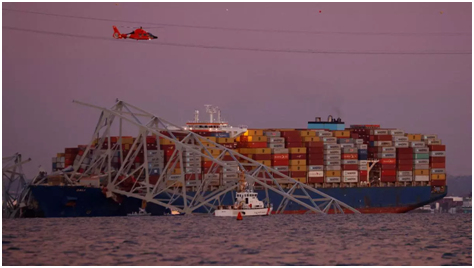
The maritime accident on March 26 in which the container vessel Dali collided
with and brought down Baltimore’s Francis Scott Key Bridge could see the
resurrection of an obscure 1851 maritime law on limited liability, coupled with
the General Average declaration, to limit the claims by cargo owners and others
on the liner and its owners. The law was
first invoked by the owner of the Titanic after it sank in 1912, to limit its
liability exposure.
Dali was bound for Colombo, and onward to Yantian, China. It held 4,679
containers, including many transit boxes for India.
The ship’s owners, Singapore-based Grace Ocean Private Ltd, have issued
the General Average — general loss — declaration as the salvage cost is
expected to be huge. This means the owners of the cargo will have to bear the
cost of the cargo to cover some of the salvage costs. The General Average declaration was introduced in the York Antwerp
rules of 1890, reviewed subsequently, and amended recently in 1994.
Richards Hogg Lindley (RHL), London, which has been appointed as General
Average adjuster, notified its intention to keep all containers under its
control until security arrangements are made with the average adjusters, both for General Average and salvage.
Meanwhile, Grace Ocean (owner) and Synergy Marine Pte Ltd (manager of
the ship) have filed a petition in the US District Court of Maryland Northern
Division for exoneration from or
limitation of liability..
General Average is declared by a vessel owner when there is
extraordinary peril to the vessel, necessitating jettisoning some cargo. The losses suffered by the merchant is made
good by the owners of the cargo that is delivered safely. A general marine
insurance covers this peril, said J Krishnan of Chennai-based S Natesa Iyer
Logistics LLP, a freight forwarder.
Freight forwarders issue their house bill of lading (BL) to individual
shippers but obtain a liner master BL recognising them as consignor even though
they do not have the title to the goods. Freight forwarders need liability
insurance to cover such claims. Unfortunately, many Indian freight forwarders
avoid this to keep their operating cost low, he said.
If the shipment is on CIP (carriage and insurance paid to), CPT
(carriage paid to) and FCA (free carrier) arrangement, the risk is on the buyer after loading; although trade is also
conducted on CIF (cost, insurance and freight); CFR (cost and freight); and FOB
(free on board) arrangements, which are better suited for bulk trades.
In the case of the Baltimore incident, the buyer would have an exposure
to contribute to General Average/ salvage, said M Jagannath, a Singapore-based
arbitrator, mediator and claims adjuster. “I would assume that cargoes would
generally be insured to and from the American market,” he told businessline.
The Dali mishap occurred when the liner was sailing out of Baltimore. If
the Indian buyers of cargo loaded in Dali are uninsured (say, shipment is on
CPT or FCA), then they would have to
contribute to the General Average, he said.
“It is important that parties review the risks
involved in their trade and take appropriate insurance cover to deal with their
exposures. Otherwise, they may face a rude surprise whenever something like the
Dali incident at Baltimore or the Ever Given grounding at Suez Canal occurs,”
he added.